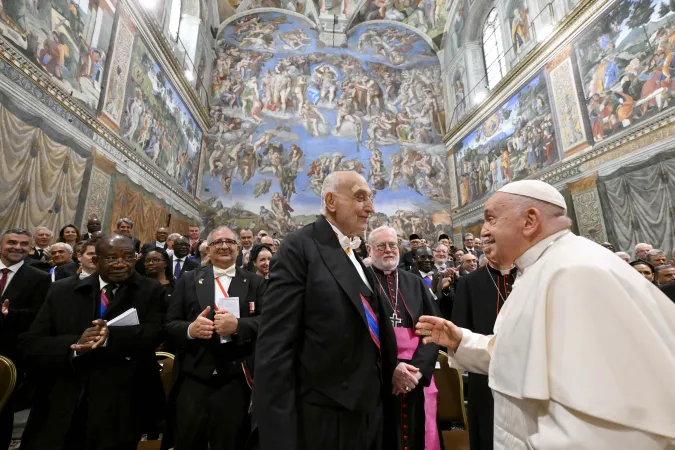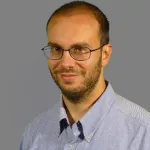
Poulides, therefore, served under three pontificates. At the time of his accreditation, there was also an address by the Pope, which now occurs only in the case of multiple accreditations of non-resident ambassadors. As Ambassador, he welcomed two Popes to Cyprus (Benedict XVI and Pope Francis) and contributed to shedding light on the situation in Cyprus, the last territory in Europe divided by a wall. Meanwhile, Poulides practically spanned three eras in the diplomatic field of the Holy See. We start from here.
Last July 5th, you celebrated twenty years as Ambassador of Cyprus to the Holy See, having experienced three different pontificates. How has the exercise of pontifical diplomacy changed in these twenty years?
In recent decades, the number of relations that the Holy See has established with other states at a bilateral level has grown considerably, as has the increasingly assiduous involvement of pontifical diplomacy in the work within international organizations. At the beginning of the Pontificate of Saint John Paul II, the Holy See maintained diplomatic relations with 84 States. In 2005, at the election of Pope Benedict XVI, there were 174. With Pope Francis, the Holy See has expanded its diplomatic network, which now consists of full relations with 184 States.
What does this enlargement depend on?
Over the last twenty years, there is no doubt that Vatican diplomacy has been able to develop new opportunities for progress and the search for peace and the capabilities of notable mediation forged by its long historical experience and neutrality, readapting itself to the new challenges of globalization that characterize the 21st century.
You are the last Ambassador to present his credentials to Saint John Paul II. Beyond the official speeches, is there anything that John Paul II said to you, in particular, on the occasion of the presentation of the letters of credence?
I had the great honor and great fortune in my diplomatic career to present my letters of credence in 2003 to Saint John Paul II. I remember, as if it were yesterday, the intense beating of my heart, my immense emotion of being received as Ambassador of Cyprus to the Holy See by the one I saw as a living legend. “This is a further positive sign of the friendship and cooperation which continue to grow between us,” commented the Holy Father in his speech, adding how the signing of the Accession Treaty of the Republic of Cyprus to the European Union was a “significant step for the nation.” But even more than that, I will never forget his genuine humanity when, turning his gaze towards my son Fotis, two meters tall, he looked at him and asked him with his benevolent smile, “How is the weather up there?” But also his excellent preparation and profound political culture when he told me that “he works and prays for peace and the reunification of our tormented island of Cyprus,” which today commemorates 50 years of military occupation.
You represent Cyprus, the last country with a “wall” in Europe. How were you able to bring the situation in Cyprus to the attention of the Holy See? In what way did you receive feedback?
Unfortunately, due to the 1974 invasion and the persistent military occupation of 37% of its territory, the Republic of Cyprus continues to be divided by force of arms. The disastrous consequences of this invasion, occupation, and forced division, which in 2024 will be 50 years old, are the constant violations of human rights, the massive colonization of the occupied territories, the usurpation of property, and the systematic destruction of historical monuments. The Cyprus issue still remains unresolved.
What is your job as an ambassador in this particular situation?
My work as Ambassador of Cyprus is the constant search for deepening and cultivating bilateral relations with the Holy See and with all accredited states, based on mutual respect for the universal values of peace, human rights and religious freedoms, and the protection of human dignity and of our common home. As Ambassador of a state that still suffers the consequences of the occupation today, it is indeed my duty to update the authorities of the Holy See on the developments and processes relating to the Cyprus issue, on the efforts of my government and the Cypriot people to obtain a lasting peace solution that paves the way for a proper, peaceful, and secure reunification of our country, a solution that restores and respects the human rights and fundamental freedoms of all the people, of the Greek Cypriots, of the Turkish Cypriots, of the Maronites, of the Armenians, and Latin Rite Catholics.
How are diplomatic relations between the Holy See and Cyprus?
The past year was marked by an essential anniversary of 50 years of diplomatic relations between the Holy See and the Republic of Cyprus. The excellent level of our bilateral relations is demonstrated by the Apostolic visits of Pope Benedict XVI in 2010 and Pope Francis in 2021 to Cyprus. Not to forget the visit of H.E. Archbishop Gallagher, Secretary for Relations with States in Cyprus in 2016, and, of course, the seven official visits of our Presidents to the Holy Father and the Holy See.
What are the differences in diplomatic approach between John Paul II, Benedict XVI, and Pope Francis?
The diplomatic approach of the three Popes is common and shared, always at the service of the good of humanity, with the aim of contributing to the construction of peaceful coexistence and brotherhood between peoples, the protection of human dignity, and the integral development of man and his fundamental rights.
Obviously, the exercise and function of their diplomatic work take on different nuances as each pontificate impacts the challenges and historical events of the specific moment in time.
What does it mean to represent your country in a particular reality such as that of the Holy See?
The Holy See is a particular reality because its universal vocation, neutrality, and moral expression make its diplomacy disinterested in economic, military, and nationalist purposes. Its mission is aimed at concern for and service of humanity, the protection of peace, and respect for human rights. This extra partes nature makes the Holy See an excellent political actor at an international level, a soft power capable of intervening as a mediator during crises, and a moral compass on issues that concern the protection of human dignity. We, Ambassadors to the Holy See, are aware of and respectful of the peaceful mission of the Holy See. The Diplomatic Corps that I have been honored to represent as Dean since 2018 is a large, united family that cultivates dialogue and mutual respect. Contrary to what very often happens in other countries, we, Ambassadors to the Holy See, are not in competition with each other for the sale of any product, including armaments, and we try in every way to follow the great desire of the Holy Father for peace and human brotherhood.
Translated by Jacob Stein
This article was originally published on ACI Stampa.

Andrea Gagliarducci is an Italian journalist for Catholic News Agency and Vatican analyst for ACI Stampa. He is a contributor to the National Catholic Register.








